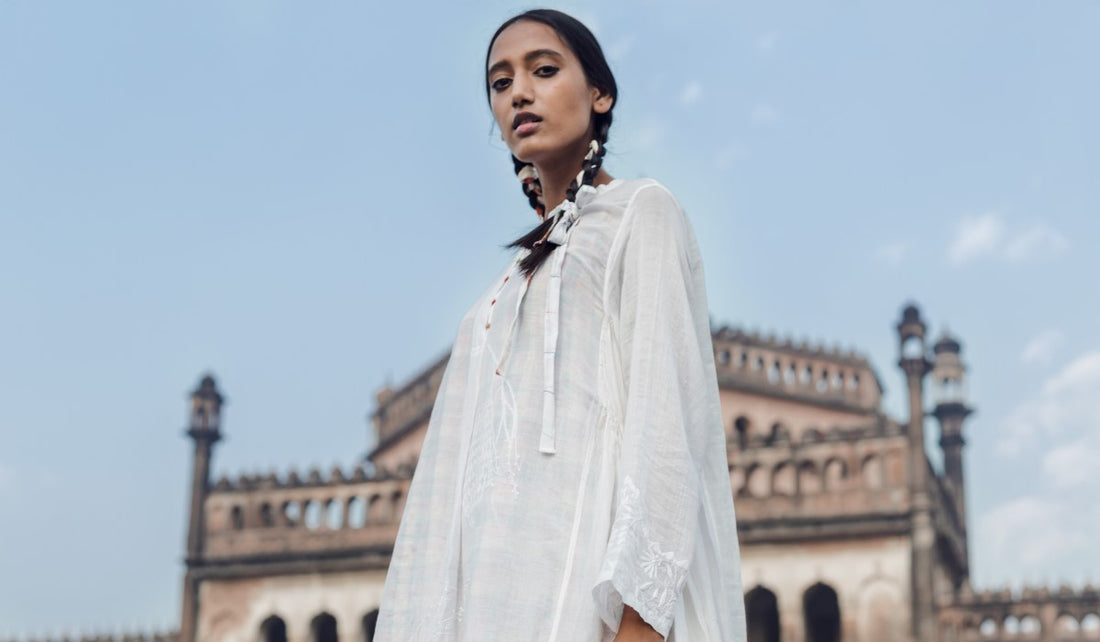
Timeless Chikankaari

All images: Summer 2019 Muslin postcards collection, courtesy of Injiri.
Chinar Farooqui believes in the beauty of hand-weaving processes, which she applies to her clothing label Injiri, launched in 2009. The brand focus is on textile development and sustainable usage of materials. Here we repost Chinar’s thoughts on Chikankaari, a type of white-on-white embroidery.
Injiri has always been drawn towards region-specific textile crafts as they tell the story of where they come from, and enrich the usage many folds. The story or impression of the maker leaves a mark on the final outcome, and that we love the most about what we do. Chikankaari is a craft we have been working with for about two years now. And fall in love with it over and over again.

This embroidery technique is used by many and exists in contemporary forms which are lower-skilled versions of original stitches. Injiri has always looked at museum quality old textiles for inspiration in many ways. An aspect that Injiri has always been drawn towards is creating nostalgia for the past. Chikankaari was used on white muslin kurtas, jamas or overgarments of men who worked in the courts, and the craft was patronized by the nawabs of Lucknow. This usage of Chikankaari shadow work white on white has inspired so many of us. The embroidery is an extension of the hand stitching technique used to make garments at leisure. It is done using a single needle and usually was done around necklines, plackets, slits, back yokes, and hems.

Sonia Ashmore wrote about Chikankaari, also Chikankari or Chikan, in Whiter Than White, Chikankari, a Flowering of Muslin in Selvedge Issue 87: Folk Art. “Unlike European whitework where threads are drawn out of the base cloth to make an openwork effect, in chikan embroidery the threads of the cloth are teased apart with a slightly blunt needle. This pulled thread work is combined with minute embossed stitches. Sheila Paine, in Chikan Embroidery, identifies the six key stitches used in chikan embroidery: tepchi (running stitch), bakhya (double back or shadow stitch, worked on the back of the fabric), hool (detached eyelet), zanzeera (chain stitch), rahet (stem stitch) and banarsi (‘no European equivalent’).”
For further information on Injiri and to find stockists visit www.injiri.co.in
To read the rest of Sonia Ashmore’s article on the history of Chikankaari, buy Issue 87: Folk Art.
